Heads up – Massive Sports Tech Holiday Deals List is Live!!! The Garmin Fenix 8 is $250 off (even the Fenix 8 Pro is $100 off!), the Apple Watch Ultra 3 is on sale, the Garmin inReach Mini 2 is $249, the GoPro Hero 13 Black, DJI NEO, and a ton of other brands/deals, including Wahoo, Oura, Whoop, Polar, Samsung, Google, and more than 100 sports tech deals here!
I’m DC RAINMAKER…

I swim, bike and run. Then, I come here and write about my adventures. It’s as simple as that. Most of the time. If you’re new around these parts, here’s the long version of my story.

You'll support the site, and get ad-free DCR! Plus, you'll be more awesome. Click above for all the details. Oh, and you can sign-up for the newsletter here!
Here’s how to save!
Wanna save some cash and support the site? These companies help support the site! With Backcountry.com or Competitive Cyclist with either the coupon code DCRAINMAKER for first time users saving 15% on applicable products.
You can also pick-up tons of gear at REI via these links, which is a long-time supporter as well:Alternatively, for everything else on the planet, simply buy your goods from Amazon via the link below and I get a tiny bit back as an Amazon Associate. No cost to you, easy as pie!
You can use the above link for any Amazon country and it (should) automatically redirect to your local Amazon site.
While I don't partner with many companies, there's a few that I love, and support the site. Full details!

Want to compare the features of each product, down to the nitty-gritty? No problem, the product comparison data is constantly updated with new products and new features added to old products!

Wanna create comparison chart graphs just like I do for GPS, heart rate, power meters and more? No problem, here's the platform I use - you can too!

Think my written reviews are deep? You should check out my videos. I take things to a whole new level of interactive depth!

Smart Trainers Buyers Guide: Looking at a smart trainer this winter? I cover all the units to buy (and avoid) for indoor training. The good, the bad, and the ugly.
-
Check out my weekly podcast - with DesFit, which is packed with both gadget and non-gadget goodness!

Get all your awesome DC Rainmaker gear here!
FAQ’s
I have built an extensive list of my most frequently asked questions. Below are the most popular.
- Do you have a privacy policy posted?
- Why haven’t you yet released a review for XYZ product you mentioned months ago?
- Will you test our product before release?
- Are you willing to review or test beta products?
- Which trainer should I buy?
- Which GPS watch should I buy?
- I’m headed to Paris – what do you recommend for training or sightseeing?
- I’m headed to Washington DC – what do you recommend for training?
- I’m from out of the country and will be visiting the US, what’s the best triathlon shop in city XYZ?
- What kind of camera do you use?
-
5 Easy Steps To The Site
In Depth Product Reviews
You probably stumbled upon here looking for a review of a sports gadget. If you’re trying to decide which unit to buy – check out my in-depth reviews section. Some reviews are over 60 pages long when printed out, with hundreds of photos! I aim to leave no stone unturned.
Read My Sports Gadget Recommendations.
Here’s my most recent GPS watch guide here, and cycling GPS computers here. Plus there are smart trainers here, all in these guides cover almost every category of sports gadgets out there. Looking for the equipment I use day-to-day? I also just put together my complete ‘Gear I Use’ equipment list, from swim to bike to run and everything in between (plus a few extra things). And to compliment that, here’s The Girl’s (my wife’s) list. Enjoy, and thanks for stopping by!
Have some fun in the travel section.
I travel a fair bit, both for work and for fun. Here’s a bunch of random trip reports and daily trip-logs that I’ve put together and posted. I’ve sorted it all by world geography, in an attempt to make it easy to figure out where I’ve been.
My Photography Gear: The Cameras/Drones/Action Cams I Use Daily
The most common question I receive outside of the “what’s the best GPS watch for me” variant, are photography-esq based. So in efforts to combat the amount of emails I need to sort through on a daily basis, I’ve complied this “My Photography Gear” post for your curious minds (including drones & action cams!)! It’s a nice break from the day-to-day sports-tech talk, and I hope you get something out of it!
The Swim/Bike/Run Gear I Use List
Many readers stumble into my website in search of information on the latest and greatest sports tech products. But at the end of the day, you might just be wondering “What does Ray use when not testing new products?”. So here is the most up to date list of products I like and fit the bill for me and my training needs best! DC Rainmaker 2024 swim, bike, run, and general gear list. But wait, are you a female and feel like these things might not apply to you? If that’s the case (but certainly not saying my choices aren’t good for women), and you just want to see a different gear junkies “picks”, check out The Girl’s Gear Guide too.


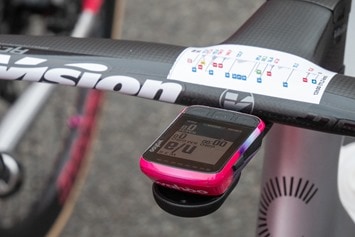
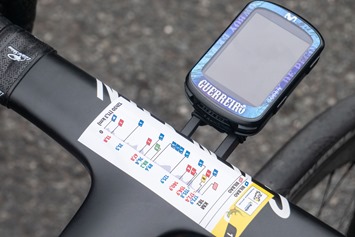

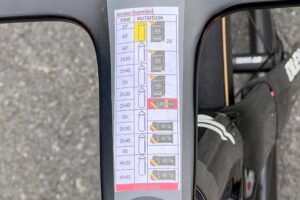
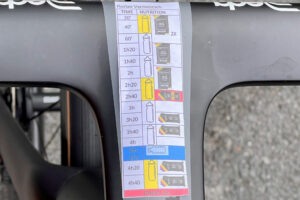
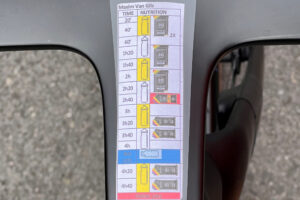
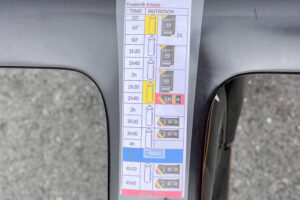

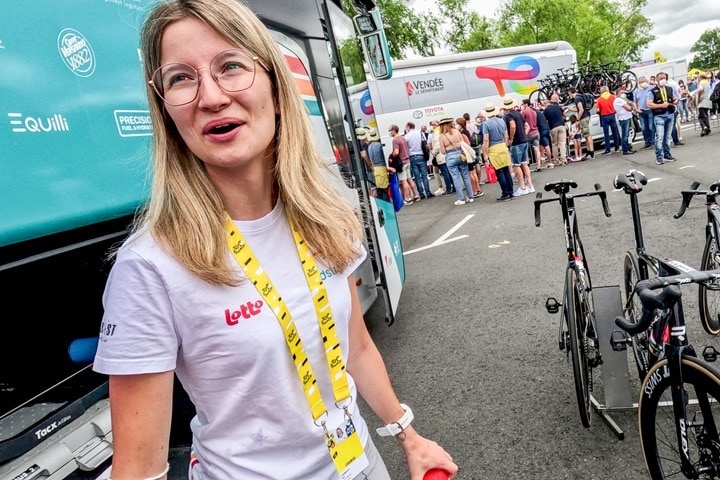
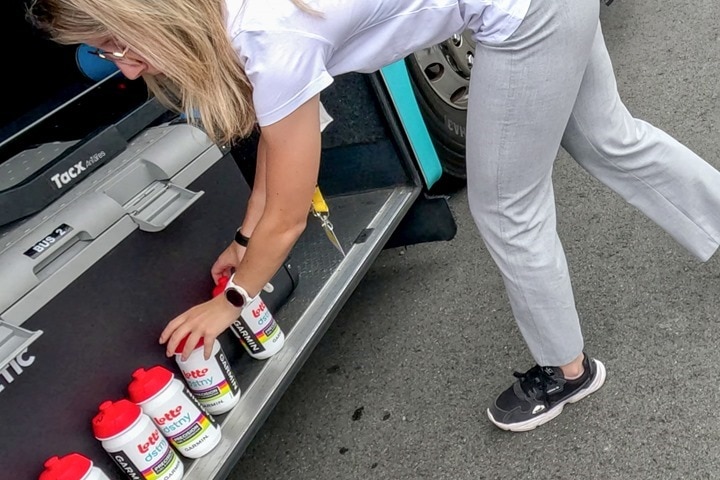
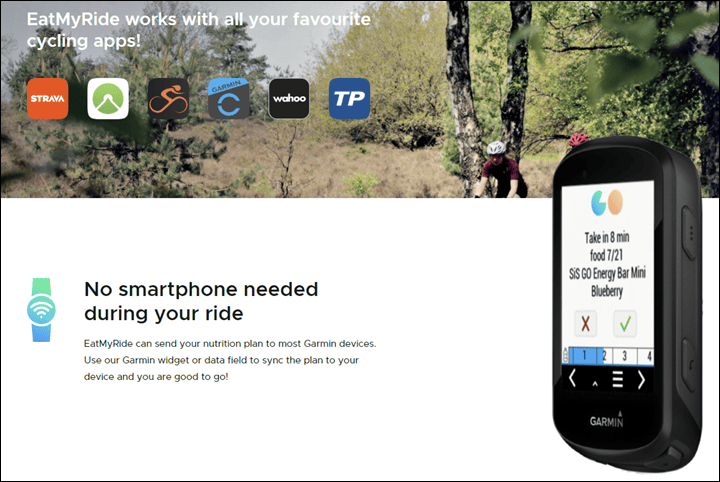
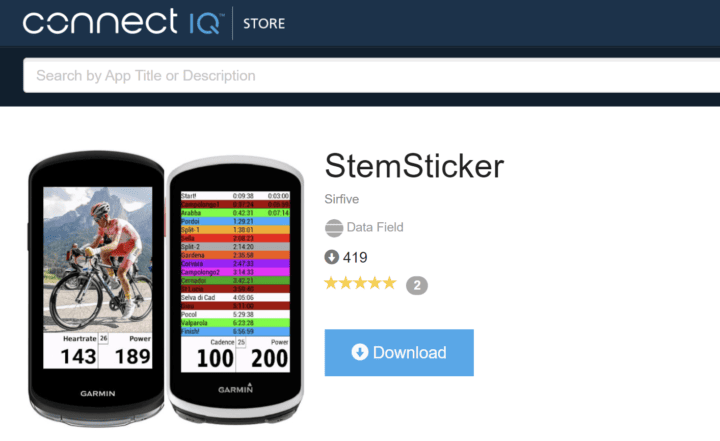





















Great find. I imagine it’s a lot simpler to create a template and print it out than download individual plans to each head unit and test them.
But then again, if I check some luggage I print out my plane ticket too.
There’s bunch more examples of nutrition stickers from Flanders here:
link to escapecollective.com
Nice! A bunch of those look like from PacingSticker.com, which if I remember correctly has/had a sponsorship with one of the teams. Albeit, I didn’t see much of that at the Tour (could easily just be timing differences for when I visited a team vs when they applied the stickers).
Thanks Ray, that’s exactly what we do! Through Pacing Sticker, we want to help every cyclist at every level to help pace as well as possible during the ride.
Each rider is going to put together their own plan in preparation by indicating on the sticker what race elements there are and when to eat and drink.
You can find all the info on our website from where we ship worldwide for free.
To all riders, good luck in achieving your cycling goals!
I was doing hydration & nutrition plans for my own races for many years. My slightly OCD personality liked that it was ‘another detail ticked’, and as Britt pointed out, it’s easy to forget to eat in the race. It’s also much easier following a plan rather than trying to remember what you have had (or not had) – and that gets exponentially harder if you miss a feed.
The hardest part for me was getting to the point of havin ga meaningful plan – figuring out what worked and when, how much I needed, and even what was practical and available took a long time to master and is more difficult for your (under)average athlete than a pro rider with the support they have. But it was time well invested, IMO. I even took a PH sweat test and incorporated that into the plan.
I’ve been doing the most low tech version of this for years. At longer races, I put basic notes on masking tape and tape that to my stem. Not as cool as this, but it works.
Thanks, Ray – really cool insider look!
Just want to clarify my understanding of a point you made about Garmin’s hydration/nutrition alerts being “generally about repeating nutrition/hydration alerts (e.g., every 20 mins)”
Garmin says that a “smart alert notifies you to eat or drink at strategic intervals based on current ride conditions. Smart alert estimates for a ride are based on the temperature, elevation gain, speed, duration, and heart rate and power data (if applicable).” I took that to mean the notifications can vary during ride based on the mentioned data points and, while I have no way to know how valid the calculations are that are driving those alerts, they do seem variable in timing at least.
What’s your understanding of how reliable those Garmin alerts are?
That’s true, but in that automatic setting, you’re not in control of it. You’re just along for the ride. Polar has a similar concept. I was mostly looking/thinking of the ‘How can I set a very specific regime’ realm.
Anyways, as for your question – I haven’t played with that option a ton to be honest. I’ve always set it for specific numbers. I’ll have to dig into it a bit over some longer rides.
Great reporting. I’ve been curious what info is on the ride notes on the bars and stems. Thank you.
On a 4+ hour ride, it is easy to miss a feed. Reminders on a label and from the head units are super helpful. Knowing when a big climb is coming and to fuel prior to a hard effort takes time with a pre-ride plan. I have timed alerts on my Wahoo for drinking and eating. I recently added a 300 calories burned alert as a secondary reminder to assess if I missed a feed or do some bonk prevention. It has helped when one is deep into the back half of a long or tough ride.
I never would have guessed they used Word, but now that I know, I can see some of the names of the rides have the little red squiggly under them from Word’s dictionary/grammar checker…
If Clippy were still around, there’d be the “so you’re looking to create a nutrition schedule stem sticker for a World Tour rider” prompts.
Now that you have said that, yes, you are right.
That means they are using word and then… take a screen shot and print that? LOL 😂
It actually kinda makes sense if you’ve ever had the pleasure of doing sticker/label work. That kind of stuff is really designed to be powered by an Excel/SQL/whatever database backend, and then it just spits out data in very formatted parameters.
But with what she’s doing, there’s a ton of variability to it. And trying to make Word happy about that variability is @#$#@ hell. Trust me, I’ve been there (said as someone who worked for Microsoft for over a decade).
What she’s doing is pretty clever. She creates it in Word not having to really worry about keeping it exactly in the formatting of the sticker sheet. Then, she screenshot it, and simply pasts the image into the sticker sheet template, where she can re-size the image as she sees fit to make the sticker template happy.
While I’m guessing there was a lot of early swear words in her figuring that out, it’s actually a really clever hack.
I started making my own stickers last year when doing long rides (gran fondos, centuries, RAGBRAI, etc.) because I always forgot when the stops were or when a KOM would start or what color the arrow sprayed on the pavement I was supposed to follow and got tired of asking the guy next to me. Some people on rides thought they were cool and so I mentioned this to some friends and posted on the RAGBRAI Facebook group and everyone liked my set up so I started selling them. Check them out, can make custom stickers for your rides too ;) http://cyclingroutestickers.com. Will be at STP next week and will be using my stickers for the 200 mile one-day ride :).
Hmmm… pic didn’t attach. Adding here.
We’ll tackle this soon. :)
Does anyone knows what are the difference between the bidon in yellow and the clear one?
water Vs other whatever drink?…
I’d like to know the answer to this to – just water and water/caffiene, or liquid fuel + liquid fuel/caffiene?
I’m gonna be back on Tuesday, it’s on my to-do list to ask.
The sticker or something comparable is very useful to avoid forgetting to fuel!
Many athletes however consume high amounts of carb and first need to get used to that intake in the first place, especially when high carb intake is combined with high carb burn (assuming you use suitable products). This is something that usually doesn’t happen and in longer races you see athletes switching 30 to 90 g/hr for 6-10 hrs instead of 3-5 at home. Many don’t succeed following the plan (some do succeed without any problem) not because they forget but they get gut issues.
Therefore it’s better to be save than sorry and practice your race fueling plan in training and if gut issues happen, analyze what can be improved. That’s what the pros do as well. If you plan 90 g/hr (or more…) without practice, you might not be able to follow the plan.
Check this video of another Team Lotto Dstiny rider:
link to youtu.be
When I read a blog post like this from DCR, I envision it like a solo breakaway at the base of alpe d’huez where DCR annihilates the “blogging peloton” and takes the win.
Question to the readers that run: where do you put your ‘stem sticker’ when running a race?
I am still trying something good for that. For a hilly race I create something as in the first photos in this article, add the distances where I can get which drinks & food (if any) and where/when to take my gels. Very useful. But I’m still struggling where to keep that ribbon of paper. Taped on my skin becomes very annoying when running a long time. And sticking it in my shorts pocket risks to get lost or crumbled. Any ideas welcome (and Ray, thanks for abusing your blog space for this question).
Use clear tape to waterproof your running sticker and and attach to your number pin in front of your shirt upside down (so you can read looking from top down).
So that is what you need a massive stem for 😅
Good stuff!
The fact that pro riders still have to use these stickers, with tons on assistants along the route and constant guidance from directeur sportifs via radio, does prove that a lot of the navigation/route info features brought by garmin, wahoo and the route planners (strava, komoot, etc..) missed important core needs.
Any leisure tourer or amateur racer would greatly benefit from simple ways to get automatically added nutrition/hydration guidelines to a route, more detailed route info (city crossing, bridge, tunnel, dangerous intersections/roads), weather info (high wind areas, low/high temperature, rainfall…), optimal power guidelines for the nerdiest and probably many additional things I am not thinking about.
I really wish manufacturers would stop implementing specific solutions (climb page, nutrition alerts, etc.. that are all computer specific and do not talk with route planners) for this need as old as cycling.
Things as simple as agreeing between computer makers and route planners on a formatting of the TCX cue points (e.g. prefix in description to say it is a nutrition instruction, or a navigation cue, or a weather info, etc..) could enable to add all of this to the route files and therefore being able to always know where you are in relation to these info/instructions : I can tell you that even for pro racers there is so often a little change to the route, or the rider who starts the ride not exactly at the start, that there can easily be 1km difference between the kms on the sticker and the reality. 1km keeping a position in a peloton while looking for a feed zone or a dangerous road can be quite stressful.
Wahoo/garmin would be free to compete on the most useful way to then display it on their units , and route planners could finally start competing on creating value beyond showing you heatmaps.
Hopefully I am not the only one wishing for that ^^
While I agree to an extent…I think having it always visible and larger than it would be on any computer screen is better. It’s an unchanging list and honestly, while I could see it being nice on a computer…if I have to swap screens to see it when I start to get so tired taht I actually need something like this to help me remember then I may even forget to go look. Sometimes technology isn’t the answer (and I work in tech… 8) )
Okay we clearly need to develop “smart stems” with a flexible display that will allow the nutritionist to create the custom profiles and push them to each rider’s bike. :)
But seriously–great to see old tech applied where it is clearly still useful and immediately available, vs. interacting with the computer for a generic screen.
While not nutrition info, I like to put cricitcal cue sheet info on glow in the dark tape so I can see it at night on 24hr+ rides.
I’ve been using a nutrition planning app called Saturday Morning (www.saturdaymorning.fit), that you might want to take a quick look at.
Simple and easy to use, you tell it your ride time, adjust for a couple variables (climbing, heat, how you sweat) and it tell you how much nutrition/hydration to take. All liquids, all chews, mix and match. They’re already working with TrainingPeaks to integrate suggestions for planned rides.
For me, it’s been a game-changer, because after using it I can now see I’ve been under-fueling for years.
What a great idea! I’m always struggling to focus on the little details of my nutrition plan by the 2nd half of a bike leg in an Ironman. (The run is easier…I just take in gels the whole time!) I have IMTX coming next spring and I’ll definitely experiment with this. IMTX is totally flat so there’s no much use for an elevation map but that would definitely be helpful on some of my 70.3s! I love this…I’m going to play around with it to make my own.
Thanks for this, so interesting! The fact to have a second screen is probably most useful. Moreover, in a stressful race situation I don’t want any reminders and things popping up. But having an overview I can check every now and then is a great help and diminishes mental load…
Besides, the general strategy to go from solid to liquid good one to be adopted in long races.
WORD!?
He’ll no!
Use desktop publishing software on a Mac or Windows. I use QUARK XPress. Use tracing paper to trace outline of the stem shape, and the ‘detail area’ where nutrition information is actually printed. Scan the outline, and import that as the template to ‘fit’ the content. Photograph the actual nutrition products you have and scale/resize these, along with bidons in different colours. The sticker will necessarily be small to fit most non-aero stems, so iconographic representations will always be better than cluttering the label up with text and graphics! The samples in the photos are very generous in size!
These labels are now fairly common in Australia on interclub rides, like double or triple centuries (200 to 300+km). Some riders just use self adhesive ‘blackboard tape’ and a white marker to scribble down memos. More commonly now the current crop of
cockpit computers are not wuss at giving you a visual/audible heads-up to drink and eat by e.g. time or distance.
It can be expensive to have these small labels printed commercially, and messy and frustrating for beginners going the home DIY way.